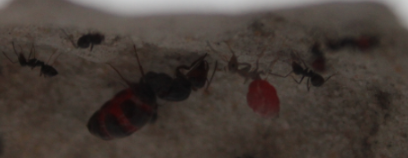Hi,
I have been keeping ants for about 4 years and had discovered this site around 2 years ago. The species I have are tetramorium immigrans, crematogaster lineolata, C. creasi, temnothorax curvispinosus, aphaenogaster rudis, aphaenogaster tennesseenis, brachymyrmex depilis, myrmica americana, formica subsericea, formica aserva, unidentified formica, solenopsis molesta, camponotus nearcticus, camponotus, pennsylvanicus, camponotus novaeboracensis, camponotus caryae, after this is most of the lasius sp in Michigan(including social parasites). Most of the species were caught in the forest next to where I live and were also caught this season and therefore have small colonies/or are founding.
I also spent most of this anting season experimenting with different methods of introducing lasius social parasites to hosts and have came to the conclusion that introducing a single callow with 5-6 pupae to the queen then gradually adding more pupae as workers hatch out is the most efficient as almost all the queens that I have introduced to hosts using this method resulted in eggs and biological workers. Overall I'm just extremely fascinated with the way social parasite species work and I find the process more rewarding.

















